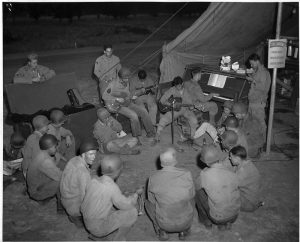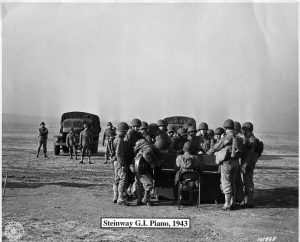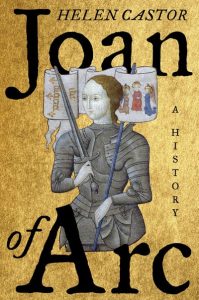Late to the Party: Independent Bookstore Day
In the United States, the last Saturday of April is Independent Bookstore Day—a nationwide party for book lovers. (Here in Chicago, the independent bookstores host a bookstore crawl, which is far more dangerous than a pub crawl as far as I’m concerned.)
For the past few years, I’ve run a blog post the day the event before reminding book lovers (which I assume includes most of you) not only of the event, but of the importance of supporting independent bookstores. This year I missed it—in both meanings of that word. It slipped past my radar, so I didn’t run my annual love letter to independent bookstores. I had a conflicting event that meant I couldn’t even make it to my neighborhood bookstore, let along running around downtown to as many other bookstores as I could manage. And once I realized that I was going to miss it in the physical sense, I missed it in the emotional (spiritual?) sense.
That said, it’s never too late to support bookstores.
I'm lucky enough to live within walking distance of my two of my favorite stores: the very academic Seminary Coop Bookstore and its more commercial sibling, 57th Street Books. Once there, I browse. I chat about books with booksellers. I check to see if my own books are on the shelves. I check to see if my friends' books are on the shelves. I attend an occasional reading when the stars are in alignment. I resist the temptation to buy books I don't need, because at this point I already own several hundred thousand books I have not yet read. And I give in to the temptation to buy more books because with bookstores it's a case of use them or lose them.
If you’re lucky enough to have an independent bookstore near you, stop by and show them some love. If not, you can adopt an independent bookstore somewhere else*—most of them ship. Or you can buy your books through Bookshop.org, an online bookseller that supports independent bookstores.
*I am happy to recommend the Seminary Coop, where you can preorder signed copies of The Dragon From Chicago**and most any other books your heart desires.
**I’ve said it enough times here that by now you know what to do: https://www.semcoop.com/dragon-chicago-untold-story-american-reporter-nazi-germany
Pianos for Victory
This story has been brought to my attention twice in the last 48 hours from two different sources.* Sometimes the universe says “You need to write a blog post about this!” in a very clear voice.
When the United States entered World War II in 1941, raw materials of all sorts were diverted to the war effort and manufacturers retooled their plants to produce war material. (Typewriters were an interesting example of this.)
At first, the Steinway piano company used its capacity for making big wooden boxes to manufacture tails and wings for gliders for troop transport and coffins for bringing casualties home. Late in 1941, the company received a request from the War Production Board to design a small upright piano that could be made inexpensively and shipped in a crate to soldiers in the field. The first prototypes were ready by June, 1942.
The pianos were designed to stand up to wartime conditions, without access to the materials the company would normally use. They didn’t have front legs because legs might have broken off when airdropped. They used only one-tenth the metal of a regular Steinway. (Just because the government ordered the pianos didn’t mean Steinway had access to the metals they used to make pianos in peacetime.) They had celluloid keys instead of ivory. The wood was treated with insect repellent and the glue was water resistant.
Known as “Victory Vertical” pianos and “G.I. Steinways,” the pianos were 40-inches tall and weighed 455 pounds. They were made with handles under the keybed and in the back, making it easy for four soldiers to carry them. They were shipped, and sometimes airdropped onto the battlefield, with a set of tuning tools, instructions for using them, spare parts, and sheet music, including current popular music for sing-alongs, Protestant hymns, and boogie-woogie tunes.
The first shipment of 405 olive drab pianos were greeted with enthusiasm, and were quickly followed by more. Later pianos were painted in olive drab, blue, or gray depending on the service to which they were shipped.
The Steinway company shipped more than 3,000 Victory Vertical pianos between 1943 and 1953, when production ended. The last of the pianos went into service in 1961, when the captain of the newly built nuclear submarine USS Thomas A. Edison requested that one be installed in the crew’s mess area. It remained on board until the sub was decommissioned in 1983 and is now on display in the Navy Historical Center in Washington, D.C.
*With thanks. Keep those stories coming, y’all.
From the Archives – Shin-kickers from History: Joan of Arc
Several months ago, I asked a group of family and friends to tell me what they knew about Joan of Arc, aka St. Joan, aka the Maid of Orleans--no stopping to look up the details. I needed to know how familiar the average smart, well-read, non-specialist is with her story.* The accuracy and detail of the answers varied, though everyone knew she was French and no one said “Joan who?” ** As I read the answers, one thing stood out: the people who remembered the most were all women who had been fascinated by her story at that age, somewhere between 9 and death, when smart girls look for historical role models to tell them that it’s okay to be tough/mouthy/opinionated/different.***
I was one of those girls. I’m still fascinated by Joan, and other warrior women. And I was delighted when two new biographies of the Maid of Orleans landed on my book shelves in recent months.
In Joan of Arc, historian Helen Castor returns to the subject of powerful medieval women that she explored so successfully in She Wolves. Castor brings a new twist to a familiar story, signaled in the use of "a history" rather than "a biography" as a sub-title. Instead of starting with Joan, she begins with the turbulent history of fifteenth century France, placing Joan's achievements within the context of the bloody civil war that began with the assassination of Louis, Duke of Orleans, at the instigation of his brother, the Duke of Burgundy, in 1407. ****
Castor takes the reader step-by-step through the labyrinthine story of a France divided between Burgundians, the supporters of the French royal family, and the opportunistic claims of England's Henry V to the French crown. Joan appears in the narrative one-third of the way through the book, when all hope of the French dauphin claiming his throne seems lost. Even after she appears, Castor never loses sight of the larger picture, placing Joan's story within the context of previous French visionaries, politics within the French and English courts, and the realities of fifteenth century warfare.
Written with both scholarly rigor and the narrative tension of a historical thriller, Castor's Joan of Arc makes the story of St. Joan more understandable, more complex, and more extraordinary. Or as cultural historian and mythographer Marina Warner put in in her own study of St. Joan: “so grand, so odd, so stirring.”
One of these days I’ll get to Kathryn Harrison’s Joan of Arc: A Life Transfigured. Then it will be time for compare and contrast.
* Note to self, next time you have this kind of question, post it on the blog. *Headsmack*
**My favorite answer captured the essence of the legend without reference to historical detail: “She was that sturdy girl that wore armor, carried a sword, fought the bad guys, stormed their castles, was burned at the stake for her troubles, and smiled while burning...thus Sainthood. ???????????”
***I’d love to think that modern pre-teens didn’t need these role models the same way we did in the Dark Ages before the women’s movement of the late 1960s and early 1970s, but I’m afraid it’s not true. Hence the popularity of the A Mighty Girl website and the #LikeAGirl campaign.
****That assassination was the subject of another book I loved, Eric Jager’s Blood Royal. Read together, the two books illuminate not only the period, but each other. It’s thrilling when that happens.


